You don’t have to be a child or an animal lover to visit Italy’s Donkey Sanctuary in the Piedmont region, but it helps if you are. Amateur historians, economists, sociologists, and psychologists should also be enchanted. Everyone is welcome – families, singles, couples, teenagers, schoolchildren, special interest groups – and you may see all these in attendance on a given day.
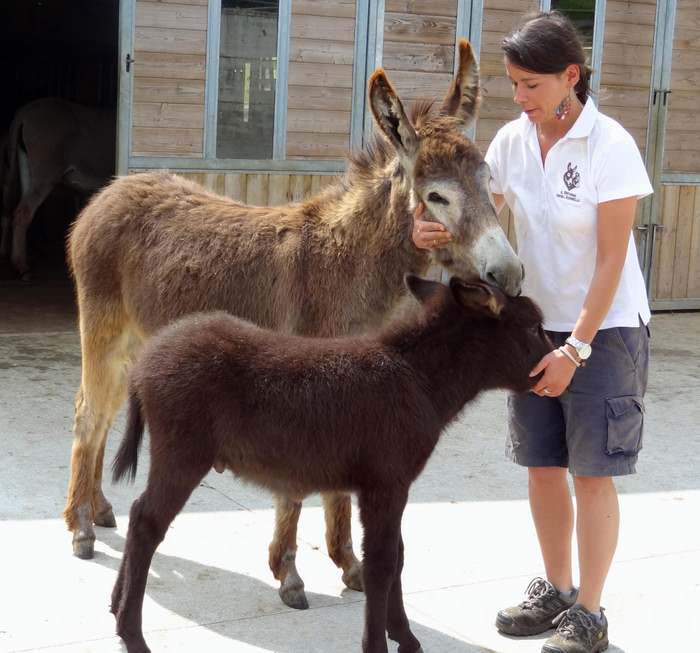
A loving bond between residents and volunteers at the Refuge
Piedmont Donkey Sanctuary
What draws up to 9,000 visitors daily to Sala Biellese, a not so-easily accessible corner of Piedmont, about 12 miles from the town of Ivrea, and roughly equidistant (42 miles) from Turin to the south and Novara to the east?
Mostly, it’s the animals. The Refugio degli Asinelli (Refuge for Donkeys) is currently home to 146 four-legged permanent residents: 130 donkeys, 10 mules, four hinnies, one horse, and one pony. (A mule is the offspring of a male donkey and a female horse; a hinny is the offspring of a male horse and a female donkey). There are differences among all these, and not only in appearance. As the saying goes, “You tell a horse what to do, you ask a donkey, and you negotiate with a mule.”
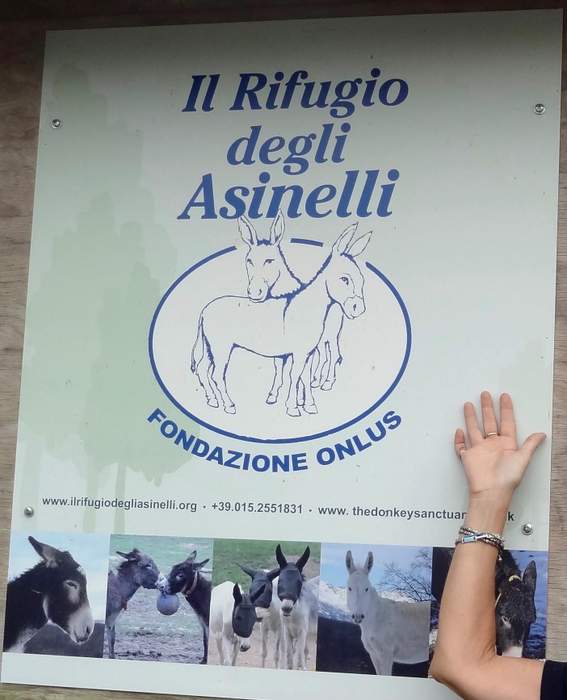
Sign at the entrance to the refuge
Volunteers at Italy’s Donkey Sanctuary do all the asking and negotiating for you. Unless you arrive for a special activity, you can wander the 20-hectare site, watch the donkeys, et. al, as they eat, sleep, play, and engage in equine pursuits. Signage explains the basics of donkeydom and the histories of some of the animals you see.
There are babies only a few months old and 30-year grizzled veterans. Some were born at the Refuge and have known love all their lives; others have been saved after years of unspeakable horror. Some will trot right up to nuzzle you through the slats of their enclosures. Others will eye you warily from a distance.

Donkey’s milk was also favoured by Cleopatra . . .
Each animal’s background can be movingly recounted by the personable, passionately-caring staff, but there is presently only one guide who can handle group tours in English. So if you are traveling with 15 or more, write to the Refuge well in advance to arrange for this service. Note that it is not usually available on the weekends.
Ten times a year, Italy’s donkey sanctuary offers visitors the opportunity to groom the donkeys as well as watch them. A calendar for each year’s Grooming Days is posted on the Refugio degli Asinelli.
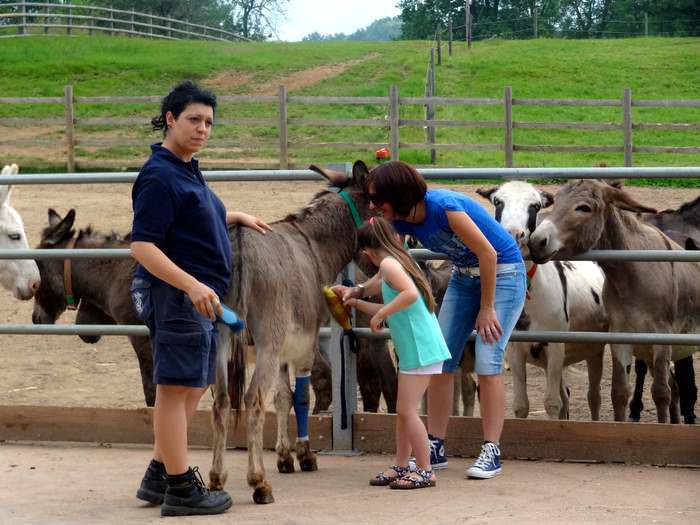
Grooming Day can be tentative for some participants
Grooming Days are very popular – especially for families with children — because of the opportunity to get up close and personal with the animals. While that is a thrill for the chosen youngsters, it can be logistically limiting if the crowds are large.You may be better off coming on a quieter day when staffers are more available to answer questions. You will learn the peculiarities of donkeys, mules, jennys, and hinnies, what they love to eat and where they like to be tickled.
While donkeys per se aren’t indigenous to Italy, eight autochthonous breeds are recognized by the Italian government. Examples of some of these can be found at the Refuge from time to time, as donkeys for centuries were the backbone of rural agriculture in this country.
The Donkey Sanctuary was created in 2006 as an offshoot of The Donkey Sanctuary of the UK, a non-profit organization working in defense of donkeys since 1969. Today they spearhead projects for donkeys on four continents in 19 countries worldwide, in addition to nine sanctuaries in Europe – UK, Cyprus, France, Greece, Ireland, Italy, Portugal, Spain, and Romania. In the UK alone there are seven farms for donkeys, though only one is open to the general public.
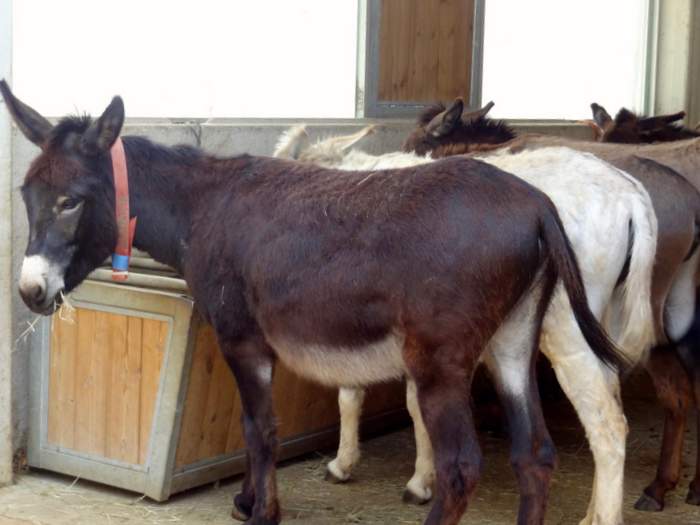
Chow time (or is it “ciao” time?) for the Italian asinelli
The Donkey Sanctuary can be visited daily except for Christmas and New Year’s. Opening hours during the summer are 10 am to 6:30 pm between April 1 and September 30; from 10 am to 5 pm the rest of the year. Reservations are not needed unless you are a large group or have a special request (such as an English-speaking guide). Most of the volunteers speak some English so don’t hesitate to visit on a last-minute basis; someone will be able to answer your questions.
There are limited spaces for picnicking on the grounds, and proper picnic areas nearby. Parking is free at the Refuge, as is entrance to the sanctuary. Rest rooms, vending machines, and a gift shop complete the hospitality offer. The location is a lovely green zone near Biella, so plan a visit with that in mind. Remember bug spray and sunscreen in the summer. Dogs are welcome as long as they remain on leash.
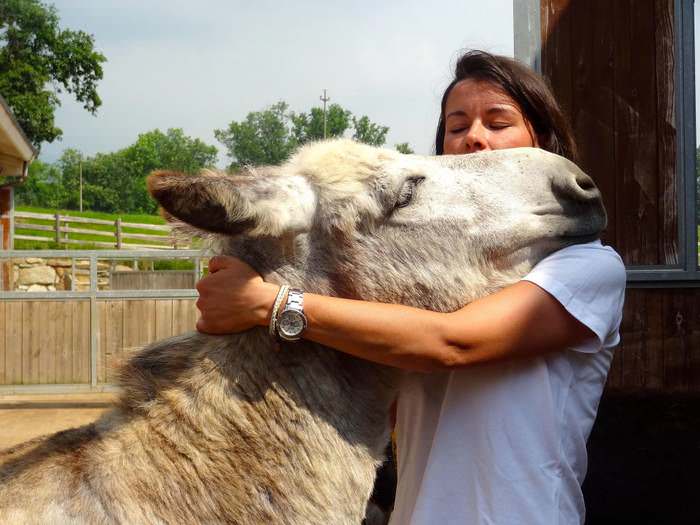
A lot of loving is doled out each day, and it flows both ways
At the end of your visit, you can adopt a donkey for a year for only € 24. For example, Alin from Romania who was found wandering in a field; Ombra from Italy who had been destined for the meat market; or Clementina, born at the Refuge from a mother who had been earmarked as donkeyburger in Switzerland. You receive a certificate and picture of your animal when you decide to adopt. A small price to pay for an “edutaining” outing.
Written by and photos by Claudia Flisi for EuropeUpClose.com
